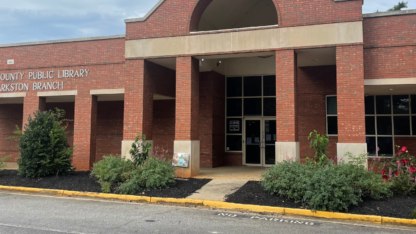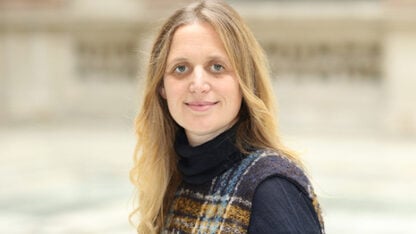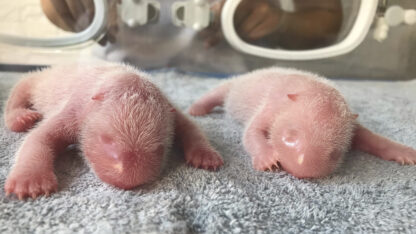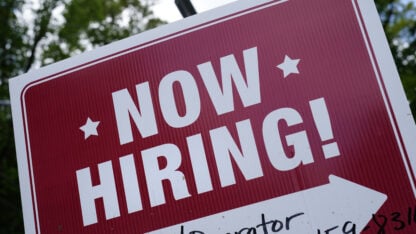The Movement for Black Lives launched a new climate change initiative Thursday, uniting more than 200 Black environmental leaders and organizations nationwide who have pledged to find equitable climate solutions centering on Black Americans and communities.
The Black Hive initiative builds on the movement’s 2021 Red, Black, and Green New Deal and reintroduces its Black Climate Mandate that outlines the urgency for a Black climate agenda and investment in equitable strategies that protect Black Americans specifically.
The announcement, first shared with The Associated Press, comes in the wake of a Supreme Court decision limiting the Environmental Protection Agency’s ability to regulate greenhouse gas emissions from power plants and the recent passage of the Inflation Reduction Act.
Numerous studies have found Black and other communities of color have borne the brunt of climate and environmental impacts for decades. Black Hive leaders said structural racism, the legacy of enslavement and socioeconomic factors such as redlining, segregation and poverty have made it more likely that Black communities are often located near toxic sites or directly affected by climate change.
“The climate crisis is happening because of corporate greed, government negligence, the divestment of solutions and the investment into the harmful institutions like the fossil fuel industry, that are harming our people,” said Valencia Gunder, national co-lead of The Black Hive. “It’s time for America to address the anti-Black racism that happens here.”
Gunder said she’s already seen the impacts of climate change in her home state of Florida. She’s been doing climate justice work in communities, focusing on the impacts of rising seas, residential displacement, and housing and food security issues. She said farmers in South Florida have told her they’ve started to see saltwater intrusion damaging crops.
“The climate crisis is probably the most important issue that we can work on,” Gunder said. “If we do not hurry up and pay attention and get to resiliency, I believe that we’re going to start seeing more destruction, more harm or death, more illness.”
The Movement for Black Lives is a national network of more than 150 leaders and organizations created to build a broad political home for Black people to organize across the country and within their communities.
The movement has expanded beyond policing to include issues such as climate change and environmental justice. The collective is calling on people to take its Black climate and environmental justice pledge and commit to advancing The Black Hive’s Black Climate Mandate that’s expected to be updated this year.
The Black Hive leaders say they plan to offer resources, data and technology, communications and disaster response support to local communities and Black-led organizations.
The initiative is focusing on several areas: water, energy, land, labor, economy and reparations, democracy, health, and global Black diaspora solidarity. Participants also plan to focus on grassroots organizing and community education to raise awareness.
For California organizer Aleta Alston-Toure′, the climate initiative feels especially timely.
Advocates like Alston-Toure′ have questioned recent climate efforts led by the federal government, including the Inflation Reduction Act signed into law this month by President Joe Biden.
Its proponents have stated billions of dollars in climate and environment investments will flow to communities nationwide that long have been plagued by pollution and climate threats. But advocates say it’s not bold enough in addressing climate issues affecting Black Americans, and they criticize provisions in the bill that support fossil fuel expansion.
“These solutions are Band-Aids,” said Alston-Toure′, who is a member of the Parable of the Sower Intentional Community Cooperative spanning several states. “There’s no solution if Black (communities) and Indigenous nations, especially the Gulf South, have to suffer in order to have Band-Aid solutions for the wider public. We want to be taken serious and know that our votes matter because this is a lynching of our communities, and we have to be heard.”
In June, 14 environmental justice organizations began to receive money under the Justice40 initiative — a Biden administration pledge to improve the environment in disadvantaged communities and help them prepare for climate change. The initiative promises to funnel 40% of all investments in climate and environment to communities that live with environmental burdens such as diesel soot, lead water pipes and lack of access to green spaces.
But Alston-Toure′ said communities need to be able to trust that money from these new initiatives will actually go directly toward Black-led organizations. She said too often the majority of funding goes to organizations or individuals not rooted within affected communities.
A study last year by the Tishman Environment and Design Center at The New School found that between 2016 and 2017, 12 national environmental grant makers awarded $1.34 billion to organizations in the Gulf and Midwest regions — but only $18 million, or 1.3%, was awarded to groups dedicated to environmental justice.
Last year, the Donors of Color, a philanthropic group dedicated to pushing for racial equity in funding environmental projects nationwide, launched a pledge drive challenging the nation’s top climate funders to shift 30% of their donations toward environmental efforts led by Black, Indigenous, Hispanic and other people of color.
Alabama resident the Rev. Michael Malcom, founder and executive director of The People’s Justice Council, said he’s hopeful the Movement for Black Lives’ new climate initiative will focus efforts on communities long ignored and will bring real change.
“We often suffer in silence in the South,” Malcom said. “We often suffer from industrial pollution, illegal land use and in even legal but unwanted land use and our communities. We have the flooding that happens in our communities, we experience the industrial pollution in our communities. Those Black and brown and Indigenous communities need a voice and somebody to be able to speak for them. And who better to represent those than communities of faith. We are addressing climate change and we’re speaking the language of our communities.”









